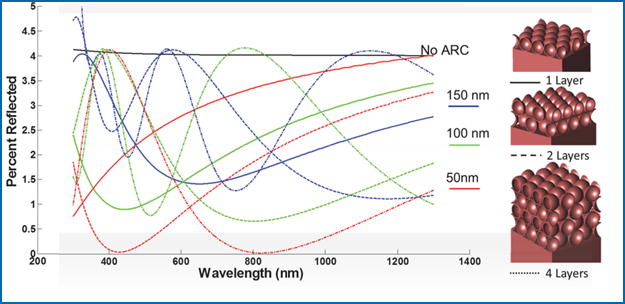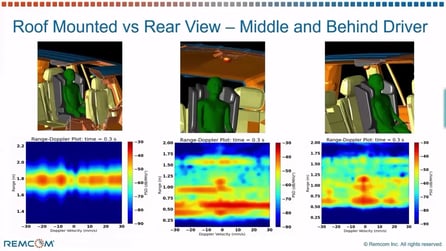Finite-Difference Time-Domain Modeling of Subwavelength-Structured Anti-Reflective Coatings
Improvements in solar module efficiency have been a popular topic of research these past few decades, usually focusing on either decreasing costs or increasing efficiency. One method to increase efficiency is by reducing reflections off solar module lamination materials. One technique to reduce reflection is to gradually increase the index of refraction from that of air to that of the surface so that there are little to no abrupt changes in RI that would induce reflections. This can be done by creating a sub-wavelength structured anti-reflective coating (ARC) at the reflective interface.

Advances in computing resources have made it possible to quickly and accurately model the anti-reflective properties of 3-dimensional sub-wavelength structures. In this paper, the FDTD method was used to model anti-reflective properties of a variety of sub-wavelength structures for 300 to 1300 nm input light. Light hitting non-tapered nanostructures exhibited interference patterns similar to thin film ARCs, increasing the anti-reflective effect at several wavelengths.


